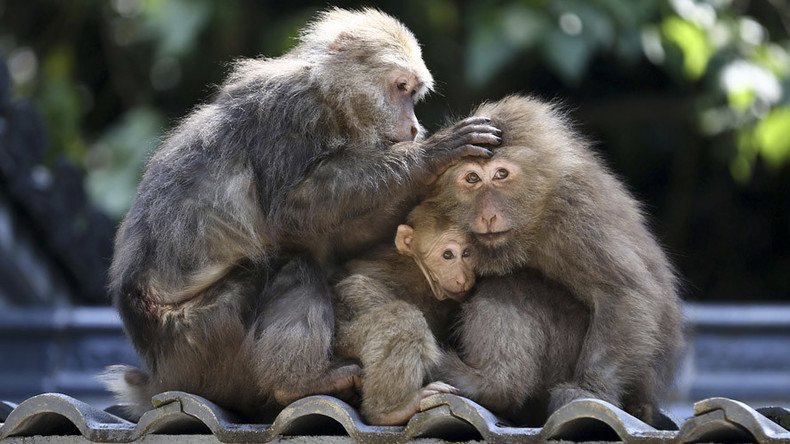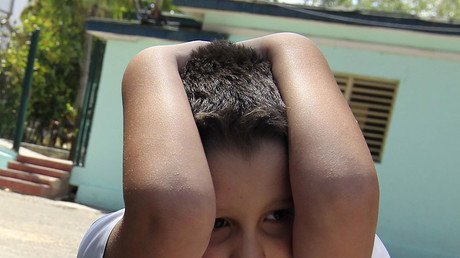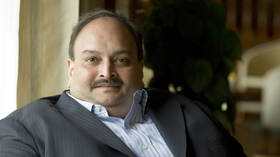China develops autistic monkeys in hope of finding cure for disorder

Scientists in China have managed to genetically engineer monkeys with a form of autism to try and get a better understanding of the condition. The researchers now hope they will be able to test new treatments to try and cure the disorder.
The monkeys had extra copies of the MECP2 gene injected into their DNA. The MECP2 gene was regarded as being responsible for autism in humans when the study began in 2010.
The researchers from the Shanghai Institutes for Biological Science said that they discovered behavior similar to that found in humans, such as pacing around in circles and not interacting as much with other primates.
“The monkeys show very similar behavior [to] human autism patients. We think it provides a very unique model," neuroscientist Zilong Qiu told the journal Nature, which published the study.
He added that the monkeys given the autism gene would “grunt, coo and scream” more often if challenged in this way, while they would also become “severely sick” in ways that “echoed” the problems human children with the gene defect.
Years of experiments on mice with autism yielded little result and made scientists switch to monkeys, whose brains are closer to humans’. The rodents for example lack a prefrontal cortex, which scientists believe is the part of the brain affected by disorders such as autism.
Twin study proves genetics 'to blame for nearly all autism cases' http://t.co/UiLDojzXRIpic.twitter.com/KyKbCpshPl
— RT (@RT_com) March 8, 2015“Mice are not in the same league when you’re talking about doing models of social cognition and interaction,” Jonathan Sebat, chief of the Beyster Center of Psychiatric Genomics at the University of California San Diego, who was not involved in the monkey research, told the New York Times. “They’re not even close.”
Given the fact that monkeys have a much longer lifespan than mice, this gives the scientists much greater time to study the effects that the autism gene may have on them. On the flip side, monkeys take a long time to reach maturity and experiments involving primates can prove to be expensive.
However, there are question marks about how effective the primates could prove to be in trying to find a cure for autism. Huda Zoghbi, a pioneer of MECP2 studies in mice at Baylor College of Medicine in Houston, says that monkeys do not experience symptoms such as seizures that humans suffer from.
“For the sake of the field and the families it is important that we study models that are constructed to genetically mimic what happens in humans and that reproduce features of the syndrome as closely as possible,” Zoghbi says, as cited by Technology Review. “It is important that we hold [these] standards to nonhuman primate models.”
Qiu and his researches say they now would like to use the CRISPR gene-editing technique to try and get rid of the extra MECP2 copies in the cells in the brain. They aim to see if by doing this, the autism-like symptoms will cease.
In January, French scientists believed they had found a way to detect autism in children as young as two, which could pave the way in helping to make it easier to diagnose the problem.
They found that the abnormality manifests itself in a shallower-than-usual fold located in Broca’s area, the region of the brain responsible for language and communication that autism affects.
Autism can take on many forms, some less severe than others (as in the case with Asperger’s syndrome), others more. The brain is where doctors look for clues. Recent developments in neuroimaging have shed light on a potential for an abnormal cortical folding. Before that, standard neuro-anatomical measurements could not get a good look at a number of disorders, autism among them.














